Composting Strategy in Mines Park
Overview
With its emphasis on sustainability, Colorado School of Mines encourages all students to follow a green lifestyle. As such, the Mines Sustainability Department has asked senior design team Banana Peel Ladies Engineering to implement a compost system at Mines Park, a student apartment complex owned by the school.
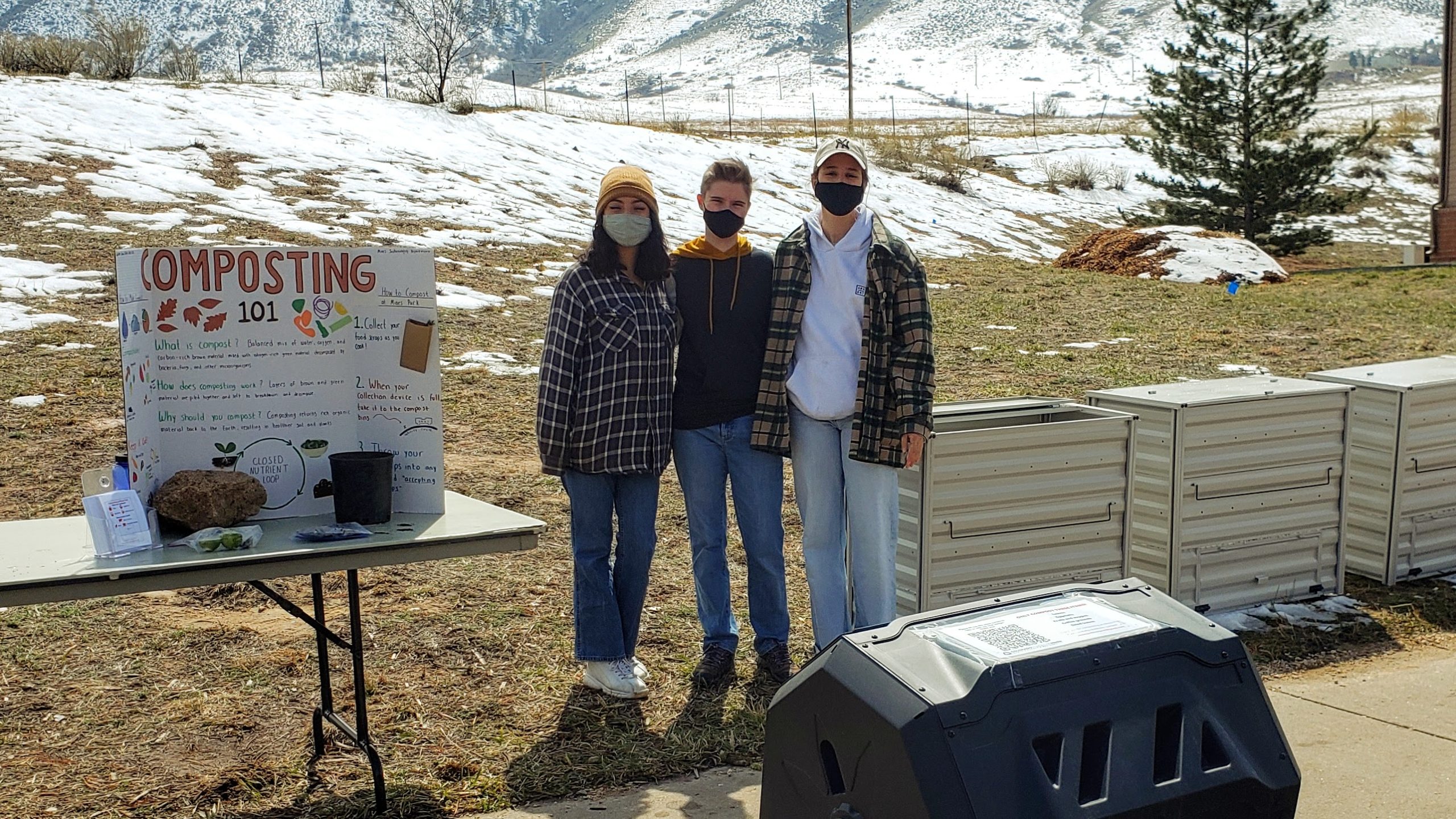
Through numerous design iterations and discussions with compost professionals, the team has implemented composting bins in Mines Park located between Buildings 2017 and 2021. Although this project involves various calculations and measurements, this project primarily concentrates on stakeholder engagement, as the effectiveness of the composting facility is uniquely dependent on the involvement of student residents and their willingness to actively reduce their food waste in landfills.
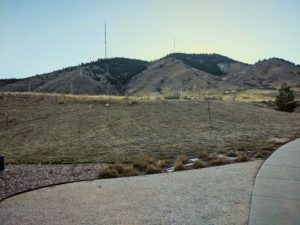
Site Location, December 2020
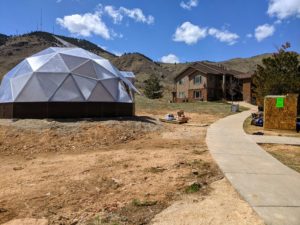
Site Location, April 2021
In addition to resident enthusiasm, this project also integrates itself within the Mines community. After the residents contribute food scraps, the produced compost soil is distributed to garden beds located in either the Mines Park greenhouse or throughout Mines campus. Overall, Mines Park residents not only reduce the amount of food waste ending up in landfills, but they also directly contribute to the aesthetics of the Mines community.
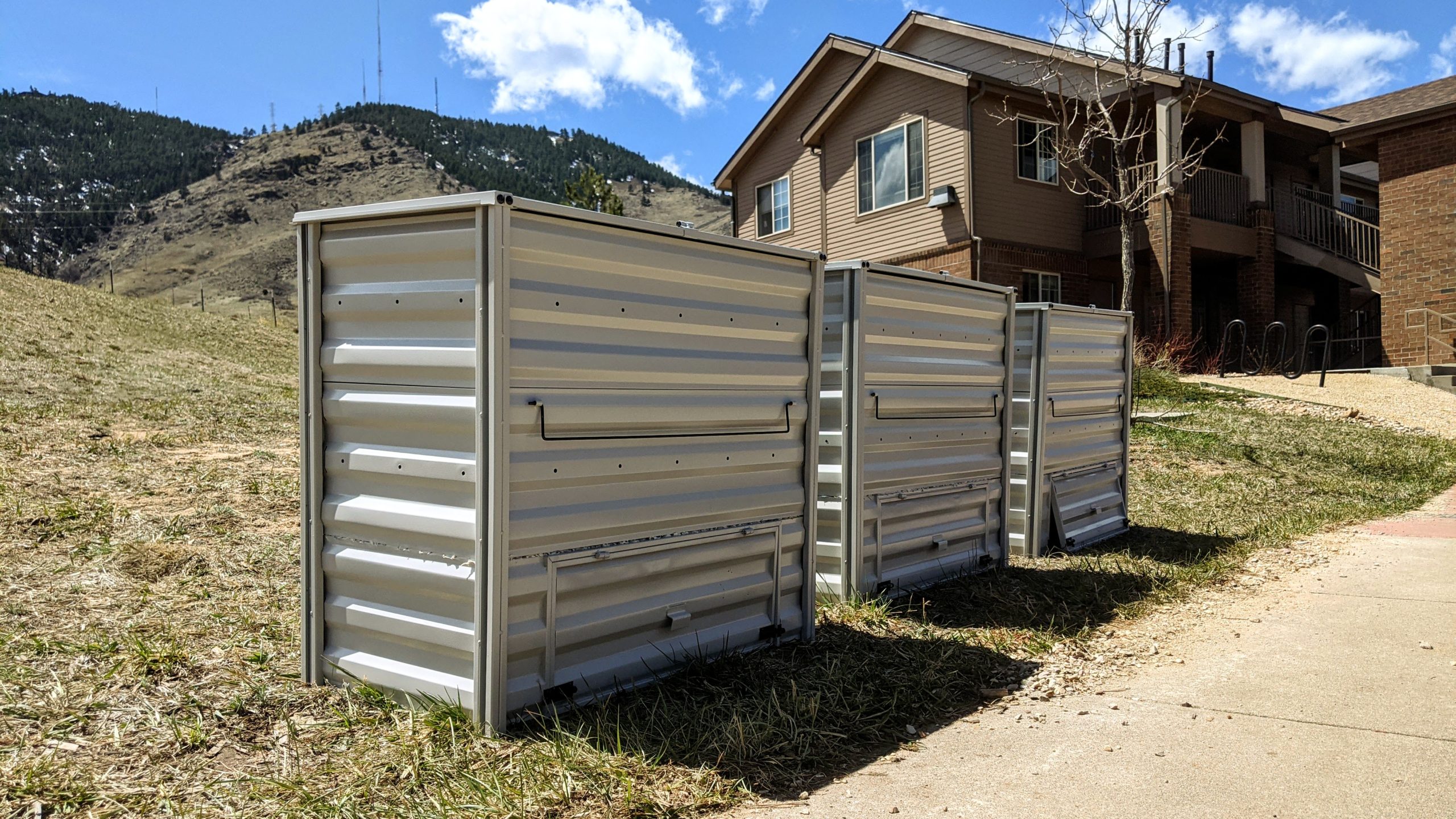
Live Zoom Chat
Use the link below to join us live from 8:00 – 10:15 a.m. on April 29.
Join from PC, Mac, Linux, iOS or Android: https://mines.zoom.us/j/92151005797?pwd=b1IyeVJxOVRMamIxallZcm5zZ0VBZz09
Password: compost
Or iPhone one-tap: 16699006833,92151005797# or 12532158782,92151005797#
Or Telephone:
Dial: +1 669 900 6833 (US Toll) or +1 253 215 8782 (US Toll)
Meeting ID: 921 5100 5797
Team Members
- Louise Angel
- Diana Teran
- Nicole Walsh
The Client
- Lauren Poole, Mines Campus Sustainability Coordinator
Acknowledgements
Project Advisor: Prof. Leslie Light
Technical Advisor: Dave Wann
Video
Elevator Pitch
Design Approach
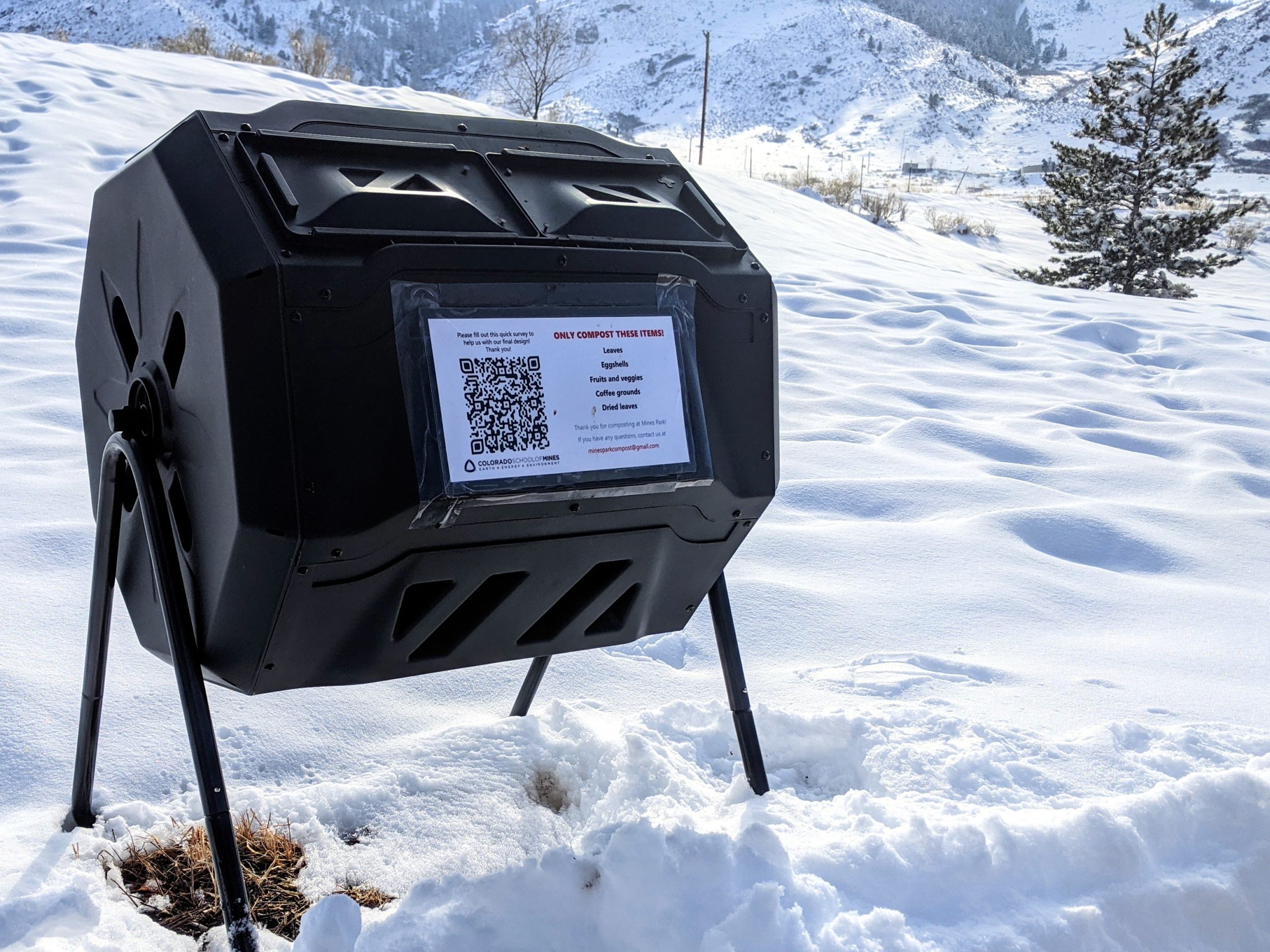
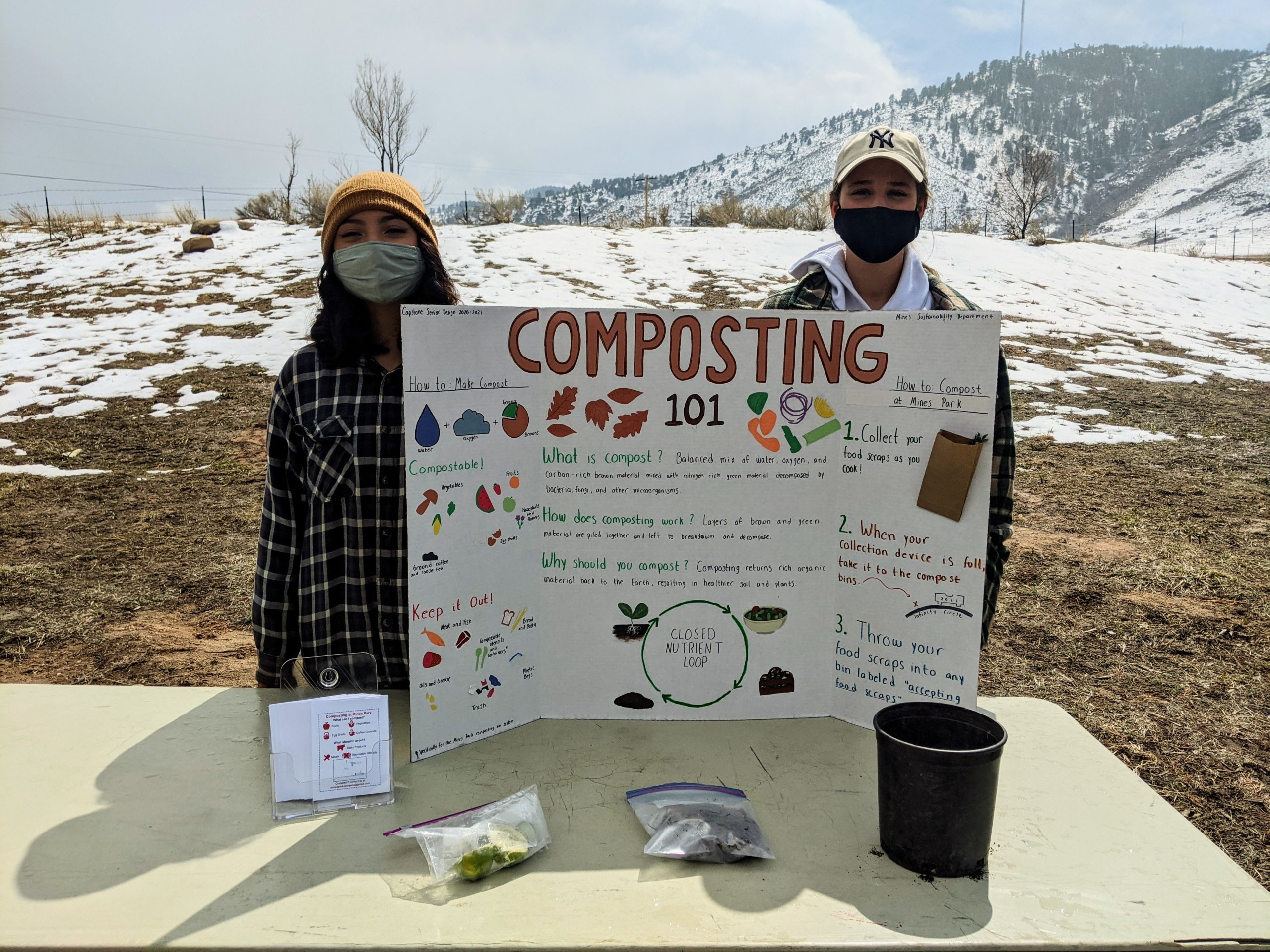
The team began the design process during the initial client meeting. We were given a composting life cycle assessment done for the Sustainable Engineering Design course the previous year for commercial composting equipment to study. Through studying this report, we concluded that commercial composting equipment— machines that automatically screen, shred, turn, and sift organic material— would not be applicable to the Mines Park community; plus, this method was also not possible with our given budget.
From the beginning, we were determined to make our project as immersive as possible. Stakeholder engagement has been very important to the team because without active participants, no composting would occur. The team researched apartment-friendly composting methods and found that tumblers, dumpsters, and bins were the most popular options. Additional analysis further revealed that tumblers and bins were the most cost-effective option.
Based on an interest survey, we found that roughly 20 percent of Mines Park residents were interested in participating. Using this information and comparing numbers with the composting model in Harmony Village, we were able to determine how many bins and tumblers we would need to serve the Mines Park community.
We sought to validate these numbers by implementing a pilot program, introducing a tumbler composting unit on-site; during the time of operation, measurements for volume, pH, temperature, and fertility (nitrogen, phosphorus, and potassium) were taken.
One final visit to Harmony Village and a conversation with our Technical Advisor revealed to the team that tumblers were not needed in order for the system to be successful, as the tumblers were only being used as collection devices and not for actual tumbling. With future operations in mind, we decided to remove the tumblers from the system in order to eliminate an extra step. Ultimately, we concluded that we would utilize metal composting bins that we would make design modifications to.
Design Solution
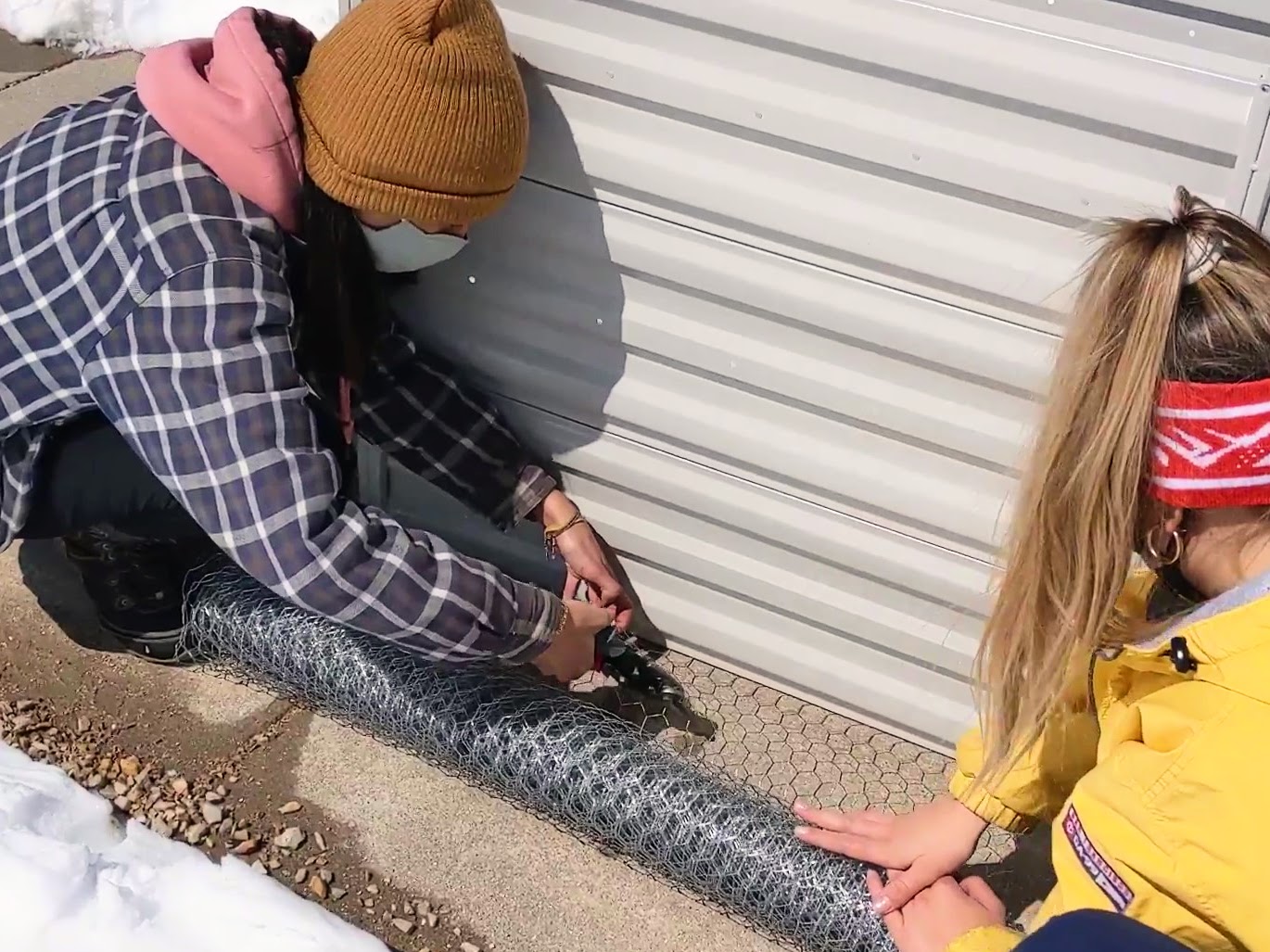
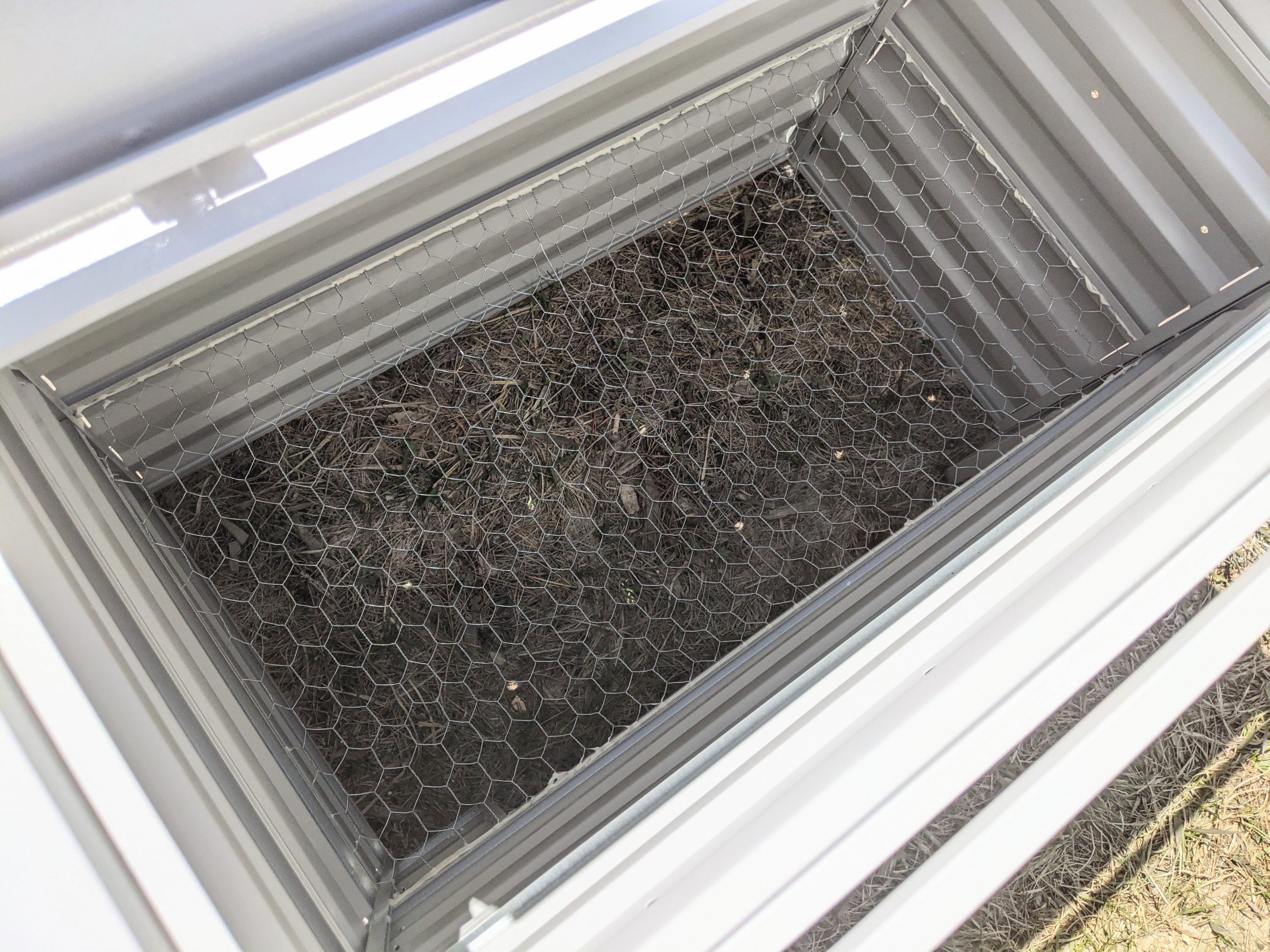
Many stakeholders expressed great concern over pest and bear populations in Golden being attracted to the compost. However, this should not be a problem as long as proper composting methods are followed by maintaining the proper green-to-brown ratio of organic material, in which there are 3 browns for every 1 green; with this ratio, undesirable odors will be prevented and the compost quality will be improved.
Green material is nitrogen-rich and will be donated from Mines Park residents in the form of food scraps. Brown material is rich in carbon and will be provided by the greenhouse in the form of their dried and dead plant material once they are fully operational; until then, the Mines Horticulturist will be providing the compost system with dry material. The rate of production will depend on the season but will take up to one month in the winter and as little as one week in the summer. The resulting soil will be given to the Mines Park greenhouse garden beds upon completion; meanwhile, it will be distributed throughout the campus beds.
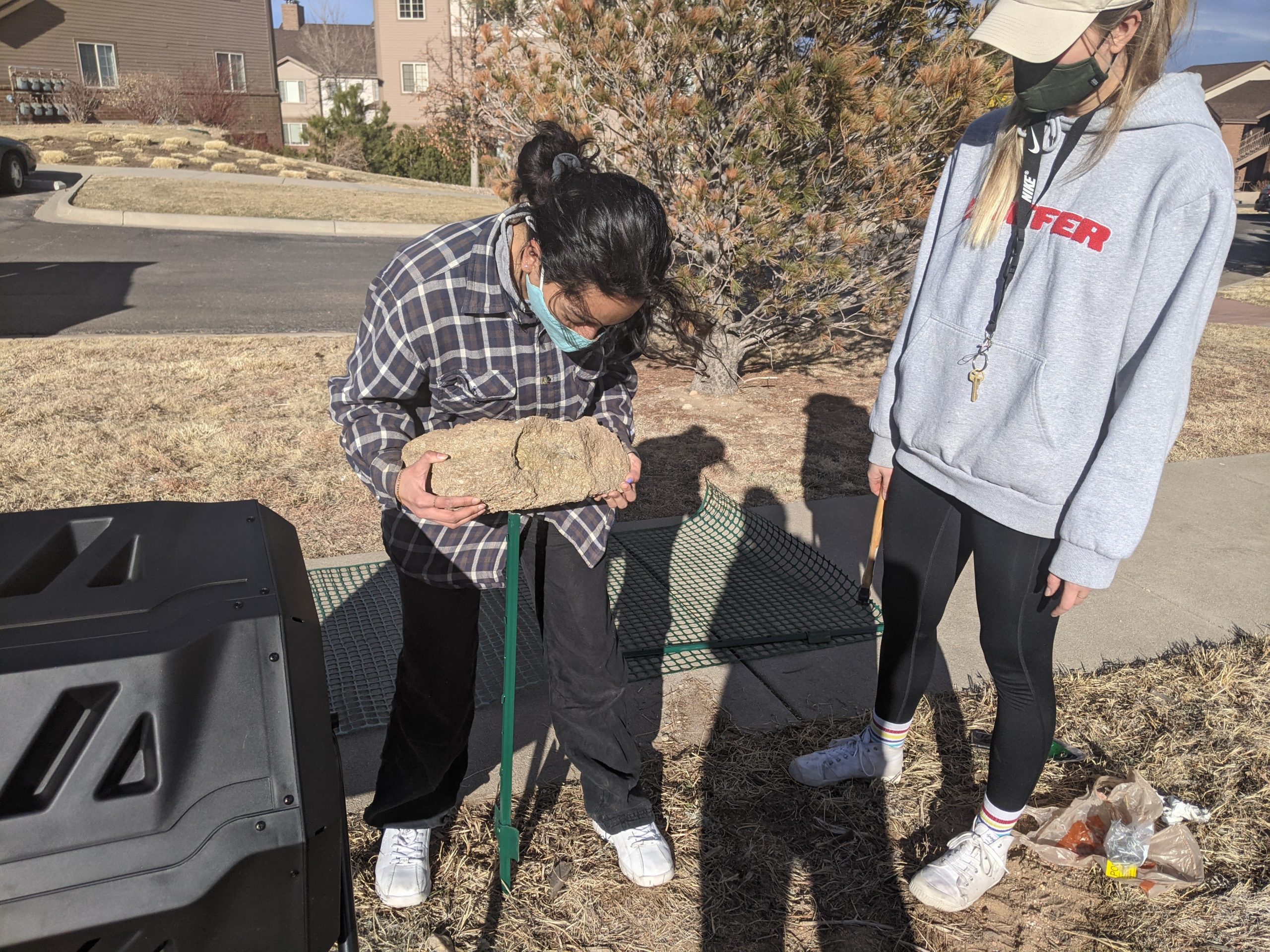
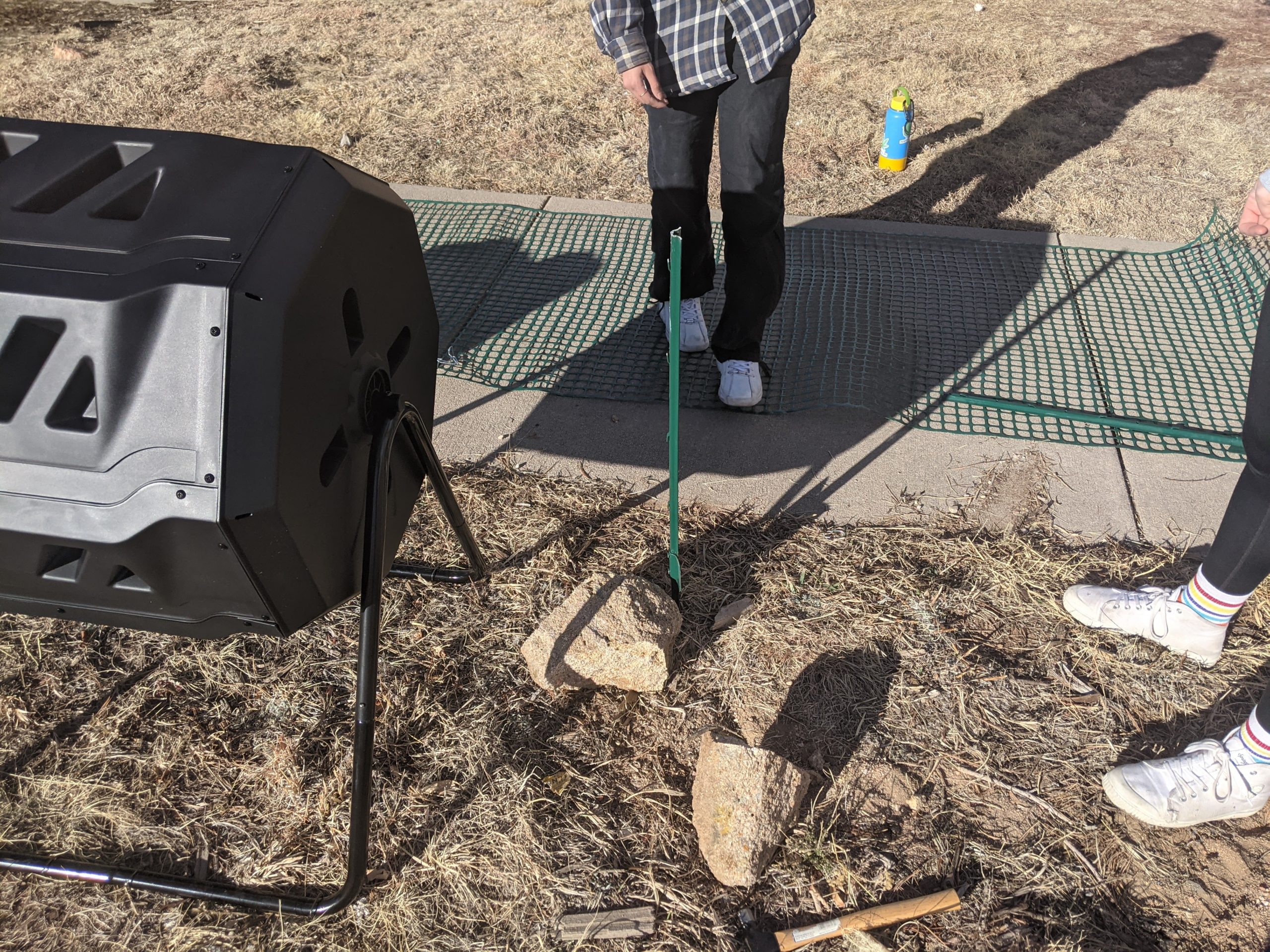
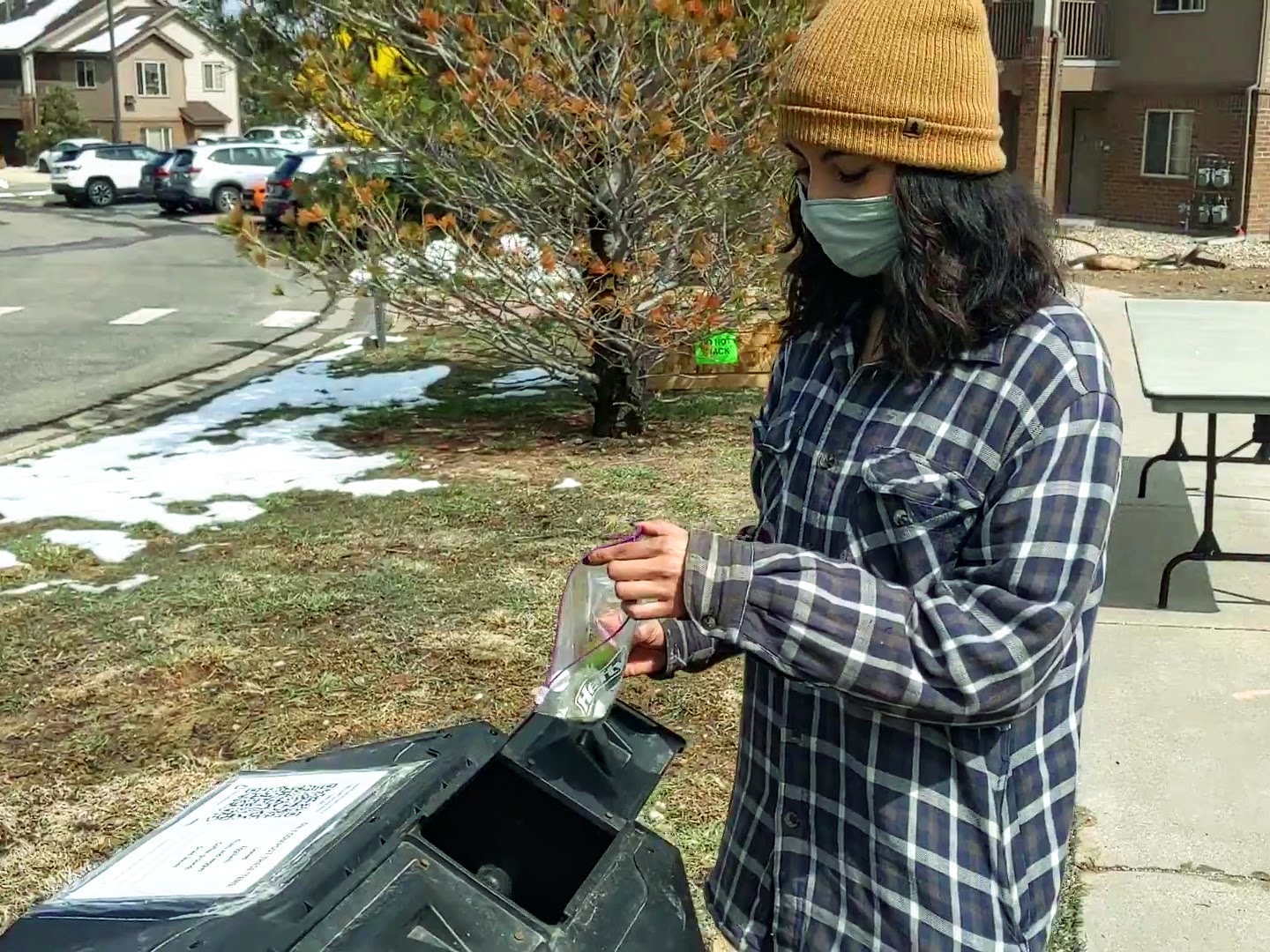
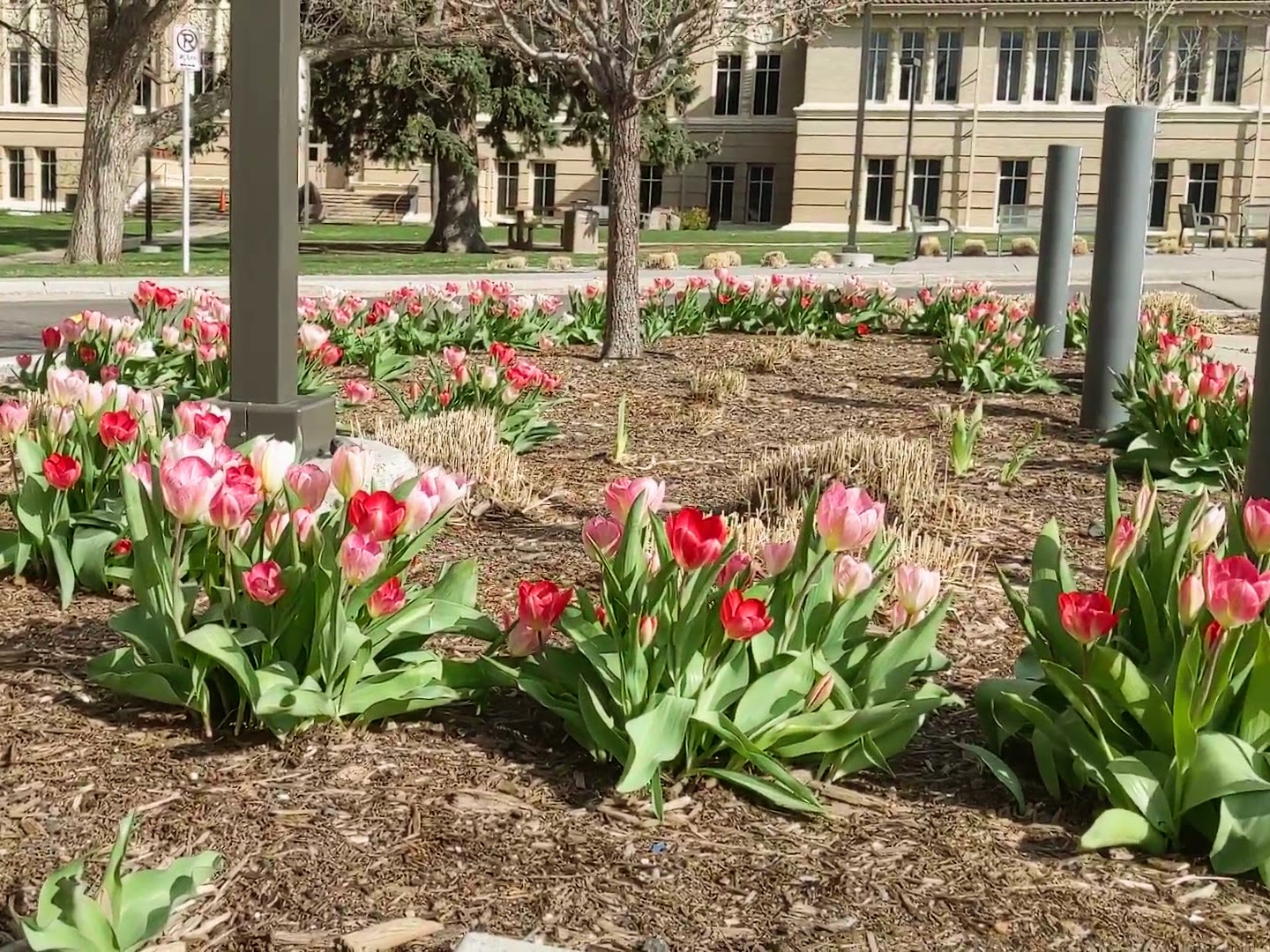
Next Steps
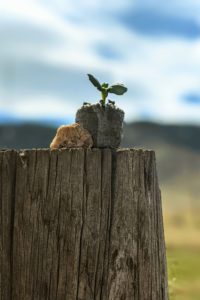 This past year, the team concentrated on introducing composting to Mines Park to increase sustainability on campus. With these composting bins now implemented in the community, future steps will involve providing educational opportunities to those interested in composting. Not only will this continue to focus on resident engagement, but the future design team can focus on designing smart technology to incorporate into the composting system. This technology will automatically take measurements for parameters such as pH, temperature, and fertility (nitrogen, phosphorus, and potassium) to transform this composting system into a smart lab. From this, students and residents will have the opportunity to learn how various inputs interact in the composting process.
This past year, the team concentrated on introducing composting to Mines Park to increase sustainability on campus. With these composting bins now implemented in the community, future steps will involve providing educational opportunities to those interested in composting. Not only will this continue to focus on resident engagement, but the future design team can focus on designing smart technology to incorporate into the composting system. This technology will automatically take measurements for parameters such as pH, temperature, and fertility (nitrogen, phosphorus, and potassium) to transform this composting system into a smart lab. From this, students and residents will have the opportunity to learn how various inputs interact in the composting process.
Additionally, the Composting Strategy team will be merged with the Mines Park greenhouse team, which will allow for increased communication and collaboration. With this merge, the integration between composting and gardening will be more streamlined and new ideas will grow.
Meet the Team
Louise Angel
 Louise is originally from Houston, Texas, and is graduating with her Civil Engineering degree in May 2021. After graduation, she is planning on pursuing a master’s degree in energy-efficient building design.
Louise is originally from Houston, Texas, and is graduating with her Civil Engineering degree in May 2021. After graduation, she is planning on pursuing a master’s degree in energy-efficient building design.
Diana Teran
 Diana Teran is a first-generation student from Chicago, IL majoring in Environmental Engineering. During her time at Mines, Diana has been involved with many professional student organizations, including the Society of Women Engineers, the Society of Hispanic Professional Engineers, and the National Society of Black Engineers. Diana was also an undergraduate research assistant for 2 years and had the opportunity to present alongside her co-researcher at the Critical Materials Institute winter meeting. Diana plans to continue this research into the summer before moving to Washington DC to pursue a career in Hydrology.
Diana Teran is a first-generation student from Chicago, IL majoring in Environmental Engineering. During her time at Mines, Diana has been involved with many professional student organizations, including the Society of Women Engineers, the Society of Hispanic Professional Engineers, and the National Society of Black Engineers. Diana was also an undergraduate research assistant for 2 years and had the opportunity to present alongside her co-researcher at the Critical Materials Institute winter meeting. Diana plans to continue this research into the summer before moving to Washington DC to pursue a career in Hydrology.
Nicole Walsh
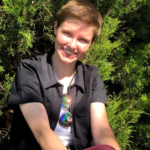 Born and raised in Colorado, Nicole is pursuing a degree in Environmental Engineering with a minor in Biology. Throughout college, she has been involved in numerous organizations, most notably Circle K International, a student-led service club. Outside of classes, Nicole enjoys participating in volunteer projects and teaching students (ages 5-12) how to code. After graduating, Nicole plans to continue teaching children, and eventually intends to get certified in teaching for high school students.
Born and raised in Colorado, Nicole is pursuing a degree in Environmental Engineering with a minor in Biology. Throughout college, she has been involved in numerous organizations, most notably Circle K International, a student-led service club. Outside of classes, Nicole enjoys participating in volunteer projects and teaching students (ages 5-12) how to code. After graduating, Nicole plans to continue teaching children, and eventually intends to get certified in teaching for high school students.
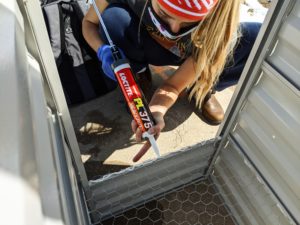 We are a senior design team of 3 students working with the Lauren Poole of the School of Mines Sustainability Department to increase sustainable habitats on campus by introducing a compost system at Mines Park. Since the project began in August 2020, the team has engaged with residents, interfaced with the
We are a senior design team of 3 students working with the Lauren Poole of the School of Mines Sustainability Department to increase sustainable habitats on campus by introducing a compost system at Mines Park. Since the project began in August 2020, the team has engaged with residents, interfaced with the